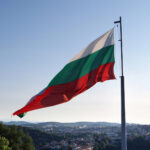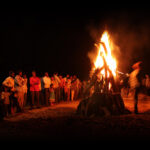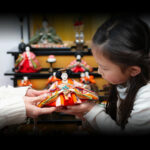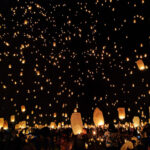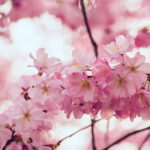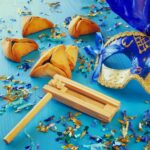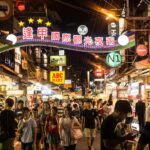The Japan Dolls Festival (Hinamatsuri), also called the ‘doll festival or momo no sekku (peach festival) and observed on March 3 every year, is a traditional and unique celebration originating from Japan. While customs differ depending on the region of Japan you are in, one thing in common: the main reason this festival is held is to celebrate female children. Flower blossoms from the peach tree are seen as harbingers of spring; they ward off evil spirits, too, and these are some reasons they are essential to this festival. People also get together to pray for female kids’ continued health and happiness, and set up cute dolls, adorn houses, and of course, prepare festive food. Modern celebrations have evolved to include honoring women of all ages. Check out what else they do to celebrate this fun day below.
On Hinamatsuri, Japanese families pray for the health, happiness, and prosperity of their young daughters. It is one of Japan’s five seasonal festivities or sekku. Day one of the first month, day three of the third month, day five of the fifth month, and so on, are all sekku celebrations. Hinamatsuri, the third sekku festival, is held every year on March 3.
History of Japan Dolls Festival
Many Japanese holidays and traditions may be dated back thousands of years, and Hinamatsuri is no exception. It was originally called the Peach Festival since it took place while the peach trees were in full bloom. Dolls have always been a big aspect of Hinamatsuri, and they’re still a big deal even now.
This started in the Heian Period (794 to 1185) when people held a similar event to pray for good fortune. People would put straw/paper dolls on rafts and push them down the river, believing that the dolls would drive off evil spirits or calamities. People began displaying these dolls in their homes during the Edo Period (1603 to 1868).
During the 1600s in Japan, when Princess Okiko, daughter of the Emperor Go-Mizuno, decided to play with a doll display created specifically for her, the custom evolved into presenting the dolls on platforms draped with a crimson-colored fabric.
Empress Meisho promoted Hinamatsuri when she ascended to the throne in 1687. Craftsmen all around Japan have been making Hina dolls for the event since then, and the tradition remains today.
Hinamatsuri was abandoned in favor of new holidays that concentrated on the emperor’s imagined connection with the people during the Meiji period when Japan started to modernize and the emperor was reinstated to power, but it was eventually reintroduced.
It symbolized Japanese goals and values by emphasizing marriage and families, and because the dolls were thought to symbolize the emperor and empress. It also instilled respect and appreciation for the throne. The Japanese diaspora carried the holiday to other countries, but it is still limited to immigrant Japanese groups and their descendants.
Families arrange events at their homes in the period preceding March 3 to show off their displays. Traditional Japanese festivals, on the other hand, are generally large public gatherings with marches, dances, fireworks, street traders, artwork, and other forms of entertainment. Even though Hinamatsuri is generally observed in one’s home with intimate friends and family, there are still traditional events held throughout the country.
The most famous part of this festival is the dolls, of course. The clothes are modeled on the Heian period and can be intricate or simple. In the early ages, as these dolls became popular, doll makers would create more and more intricate designs, some of which were quite valuable and expensive. And so, tiers were added to put the pricier dolls out of children’s reach. The display of dolls evolved and became more elaborate.
Today, this festival is celebrated by Japanese people everywhere. Little girls are encouraged to hold parties in the days leading up to the festival, gorging on festive sweets and foods. Households with girls display their dolls, and peach blossoms feature prominently in the decor. More and more households have now expanded tradition to celebrate all women. Once the festival is over, however, the dolls are packed away until the next year.
Japan Dolls Festival timeline
Doll-making is introduced in festivals during the Heian Period.
Home displays for the dolls are introduced during the Edo Period.
Hinamatsuri becomes the official name of the celebration after Oki-ko succeeds her father as Empress.
Hinamatsuri is abandoned during the Meiji period in favor of new festivals and restored afterward.
A survey shows around 83% of Japanese respondents did not celebrate the festival.
A Google Doodle showcases the festival and encourages people to explore the history of this event and the history of Japanese dolls.
Japan Dolls Festival FAQs
What happens to dolls after the festival?
The dolls were traditionally intended to be observed the day after Hinamatsuri, with the idea that if they were left any longer, the daughter would marry late. However, some families may keep them on for the whole month of March.
Which Hinamatsuri is the most expensive?
The price of Hina doll displays varies considerably depending on the number of dolls and tiers. The most expensive sets can cost over one million yen, although the most common sets are about 200,000 yen. Seven tiers, 15 dolls, plus a small display of the empress’s dowry furnishings make up the whole display.
What do girls wear on Hinamatsuri?
On this day, girls visit shrines dressed in brightly colored kimonos with a hifu, a cape-like garment worn over the kimono.
Japan Dolls Festival Activities
Visit Japan
Around 8,000 Hina dolls are on display at the Katsuura City Art and Cultural Exchange Center in Chiba, Japan. It's an excellent choice for people who want to get a firsthand experience of the festival.
Celebrate the females in your family
Show some love to the females in your family. Celebrate them with gifts and food.
Take a culinary trip to Japan
Food plays a big role in Hinamatsuri celebrations in Japan. Try a traditional Japanese dish to celebrate the Japan Dolls Festival.
5 Fun Facts About Hinamatsuri
Iwatsuki: the City of Dolls
This top doll-producing Japanese district holds a Machikado Hina Meguri — Touring the Streets of Hina Dolls — event each year and has more than 50 shops selling various figurines.
Decorating a city with dolls
During this festival, Katsuura City in Chiba, Japan, celebrates 'Katsuura Big Hinamatsuri', decorating their entire city with around 30,000 Hina dolls.
Celebration only for girls
Traditionally, boys did not celebrate Hinamatsuri, as they held a 'Boy's Day' a few days later; ‘Boy’s Day’ has now been rebranded as 'Children's Day’ and is celebrated on May 5 each year.
Simplicity and prearranged designs
In the past few years, demand for single, compact sets of dolls already arranged in glass cases has grown.
What the dolls represent
The primary dolls — a male and a female — are displayed to resemble a Heian period wedding; they are usually called or described as the Emperor and Empress of Japan.
Why We Love Japan Dolls Festival
It’s a crucial part of Japanese culture
Hinamatsuri is a very important holiday in Japanese culture; it is symbolic. Its purpose is to commemorate, celebrate, and inspire young women all over the country.
Good luck and prosperity
The festival's traditions are intended to ensure that the coming years of the young girls' lives are blessed with good luck and prosperity. We can’t help but love that.
Good eats
Food is an important part of Hinamatsuri, as it is with every celebration. Japanese people celebrate this cheerful occasion with a variety of delectable dishes and traditional Japanese sweets. Who can say no to a delicious treat?
Japan Dolls Festival dates
| Year | Date | Day |
|---|---|---|
| 2026 | March 3 | Tuesday |
| 2027 | March 3 | Wednesday |
| 2028 | March 3 | Friday |
| 2029 | March 3 | Saturday |
| 2030 | March 3 | Sunday |





